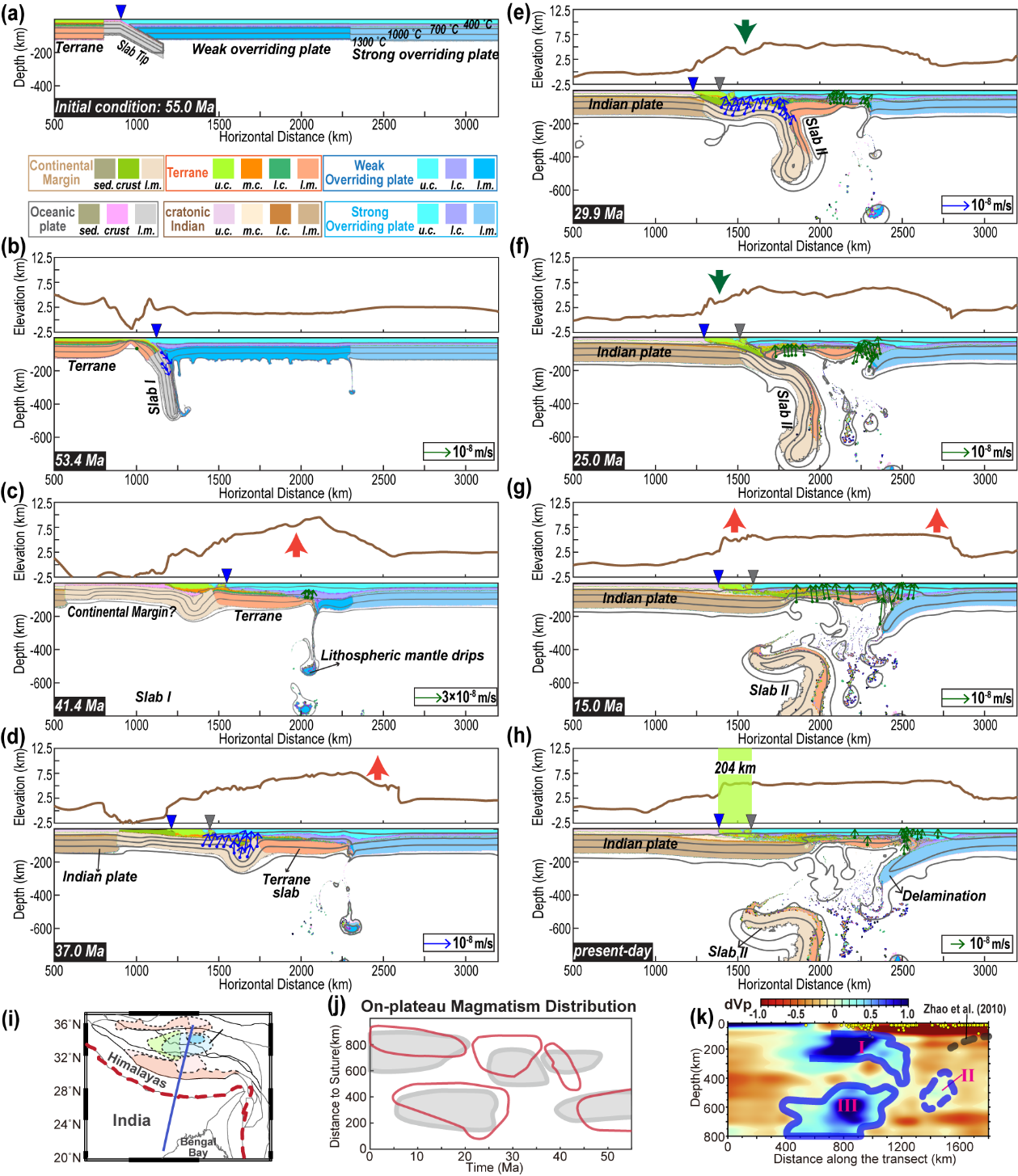The nature of the lost Cenozoic tectonic plate between the India and Tibet remains hotly debated. In previous studies, this block has been suggested to be largely continental, oceanic, or a mixture of the two (Fig. 1). As the subduction history of this lost plate is key to understanding the formation and evolution mechanisms of the Tibetan Plateau, diagnosing its nature remains as of the geological issues attracting broad attention.
Fig.1. Potential structures of the lost plate between India and Tibet.
Recently, Liang Liu from Yi-Gang Xu’s group in the GIG, CAS, collaborated with L.J. Liu, J. Morgan, and L. Chen, based on the joint method of numerical modeling and multidisciplinary observational constraints, proposed that the lost plate between India and Tibet was mainly composed of a highly buoyant terrane and a following block with a thin crust. Based on the academic convention, they named the lost plate “Himalandia”.
Their study further reveals that the post-Paleocene subduction history between Inia and Tibet composes of three main stages: the subduction of the buoyant terrane, the successive subduction, rollback, and tearing of the block with thin crust, and the final collision between the Indian sub-continent and Tibet followed by the India underthrusting (Fig. 2). This generic model partially merged the “Great India” (Type 1 in Fig. 1) and “Greater Indian Basin” (Type 5 in Fig. 1) models and seems to have explained some “contradictory” observations used to be treated as evidence for different end-member models.

Fig. 2. “Himalandia” model. (a)-(h) Initial condition and key evolution snapshots of the numerical model. Blue arrows—fluid migration. Green arrows—melt migration. (i) Transect location for k. (j) Comparison between the modeling results (red) and the magmatic distribution (grey) in Tibet. (k) Comparison between the modeling results (blue) and the seismic tomography below the India-Tibet region.
In this work, Liang Liu upgraded the modeling method from J. Morgan’s group. It has an adaptive mesh, non-linear viscosity & density algorithms, and a primary algorithm for simulating melt/fluid generation& migration. This study has been partially published in Nature Communications and Geophysical Research Letters. This project was supported by the Fundamental and Applied Fundamental Research Major Program of Guangdong Province (2019B030302013) and the National Key R&D Program of China (Grant no. 2022YFF0801002). Liang Liu acknowledges the NSFC (Grants 42104105) and Tuguangchi Award for Excellent Young Scholar (TGC202101).
Related Publications:
1. Liu, L.*, Liu, L.J.*, Morgan, J.P., Xu, Y.-G., and Chen, L.(2023). New constraints on Cenozoic subduction between India and Tibet. Nat Commun 14, 1963. https://doi.org/10.1038/s41467-023-37615-5. https://www.nature.com/articles/s41467-023-37615-5.
2. Liu, L., Liu, L.J., & Xu, Y.-G. (2021). Intermittent post-Paleocene continental collision in South Asia. Geophysical Research Letters, 48, e2021GL094531. https://doi.org/ 10.1029/2021GL094531.